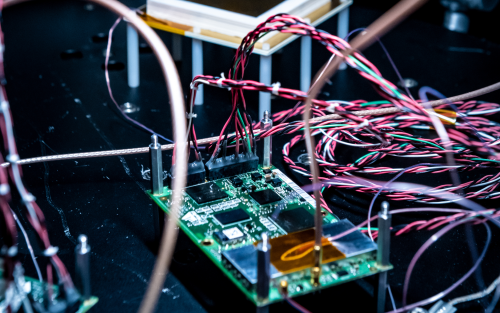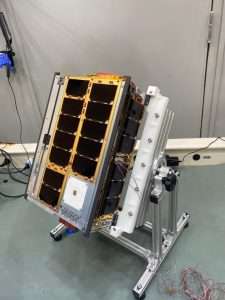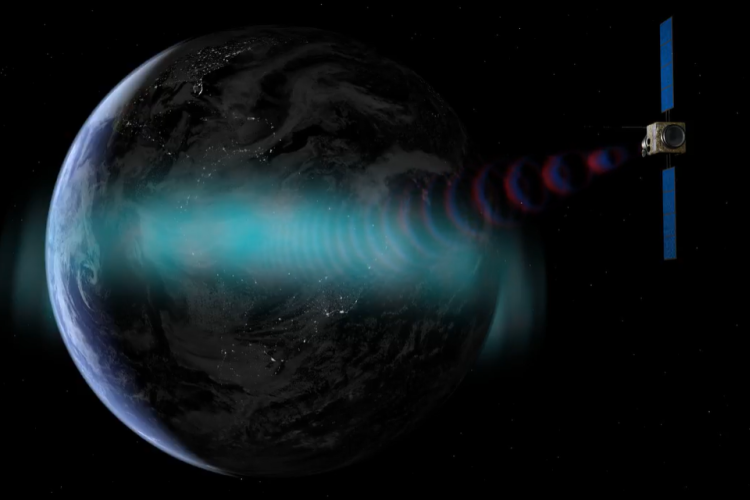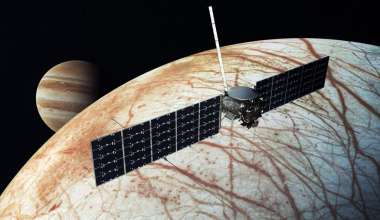The ionosphere is a portion of Earth’s atmosphere where radiation from the sun creates a lot of electrically charged particles called “plasma”. The density of the plasma varies depending on the season, time of day, and other factors.
Sometimes there are density depletions near the equator known as equatorial plasma bubbles, and rapid changes in the density at the edges of the bubbles are known as “scintillation”. Radio signals transmitting from satellites to the ground must pass through the ionosphere and may be affected by the scintillation.
Aerospace provided a critical sensor for an international CubeSat mission to study this phenomenon in hopes of predicting its occurrence. This mission, dubbed SPORT, launched on Saturday, Nov. 26 onboard a SpaceX Falcon-9 rocket at 2:20 p.m. ET to the International Space Station from Launch Complex 39A (LC-39A) at NASA's Kennedy Space Center in Florida.
(Credit: NASA)
The Scintillation Hazard
According to the National Oceanic and Atmospheric Administration, “Severe scintillation conditions can prevent a GPS receiver from locking on to the signal and can make it impossible to calculate a position. Less severe scintillation conditions can reduce the accuracy and the confidence of positioning results.”
Since scintillation can adversely impact everything from GPS signals to communication to over-the-horizon radar, there has been a large amount of research trying to understand what causes scintillation, how to predict its occurrence, and how to mitigate its effects. However, the ability to predict scintillation remains elusive.
SPORT CubeSat

SPORT, which stands for Scintillation Prediction Observations Research Task, is an effort to study the formation and evolution of equatorial plasma bubbles which may, in turn, cause scintillation.
The 6U CubeSat that will assist in this endeavor is expected to launch on Nov. 22 from Kennedy Space Center’s Space Launch Complex 39A as part of a commercial resupply mission en route to the International Space Station.
“We want to know what are the background conditions pre-scintillation, and can we use that to determine when scintillation will occur?” said Dr. Rebecca Bishop, Aerospace’s lead on this project. “That’s kind of the holy grail in our field.”
Brazil built and will operate the CubeSat as well as maintain the ground observation network of radars, imagers, and scintillation monitors. On the U.S. side, NASA coordinated the launch and the CubeSat’s instruments, including Aerospace’s sensor and five other instruments provided by NASA and university partners. Both Brazil and the U.S. will analyze the data and collaborate on individual studies.
“Brazil is very, very interested in scintillation,” Bishop said. Due to a large part of Brazil being located near the magnetic equator, and a feature known as the “South Atlantic Anomaly”, Brazil experiences more scintillation than a lot of other countries.
The Compact Total Electron Content Sensor

Aerospace’s contribution to SPORT is the Compact Total Electron Content Sensor (CTECS), which is a GPS radio occultation (RO) sensor. It receives the GPS signals and measures how they change as they pass through the ionosphere. From these measurements, the plasma density and a scintillation index can be extracted.
“Historically, GPS RO sensors are on the order of 5 kg and 20 watts, which is basically the same size and twice the power of a 3U CubeSat,” Bishop said. “We developed this as a low-cost, low-mass, low-power GPS RO sensor for a CubeSat.”
Aerospace adapted a commercial receiver by adding special software and a custom antenna to create CTECS. The 0.153-kg sensor fits nicely on the SPORT CubeSat, and together with the other five instruments, contributes to the valuable data this mission will collect.









